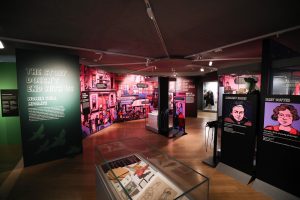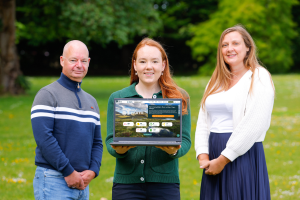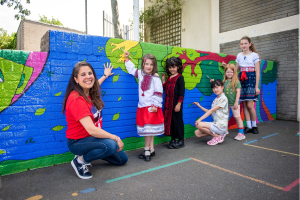The Ulster American Folk Park has introduced a new exhibition, highlighting the adversities many women and girls faced when they migrated to North America from Ireland in the 19th and early 20th centuries.
‘Bad Bridget’ looks into the experiences of Irish girls and women in Boston, New York and Toronto from 1838 to 1918 and the challenges they encountered with the authorities as they struggled to survive.
The exhibition is the first new display in the temporary gallery in four years, and has immersive elements including the installation of smells, which represents an exciting new direction for Omagh’s Ulster American Folk Park.
Victoria Millar, Senior Curator of History at National Museums NI, said: “We are thrilled to have opened our ‘Bad Bridget’ exhibition to the public. Traditionally, women’s stories have been underrepresented at the Ulster American Folk Park, even though women accounted for around half of Irish migrants from 1800 onwards. ‘Bad Bridget’ represents the beginning of a new experience here for our visitors with our collaboration focusing on new sensory elements.
“The exhibition features almost 150 original objects from the collections of National Museums NI, including numerous domestic and personal items, costume, works of art and natural history specimens.”

‘Bad Bridget’ has been predominantly developed and curated by a female team with funding from the Arts and Humanities Research Council. The initial research and concept behind ‘Bad Bridget’ was carried out by Dr Elaine Farrell, Queen’s University Belfast and Dr Leanne McCormick, Ulster University. Female creatives including author Jan Carson; illustrator Fiona Mc Donnell; scent designer Tasha Marks; and sound artists, Franziska Schroeder and Catriona Gribben, have used their talents to bring the stories of these women to life.
Dr Elaine Farrell, History Lecturer at Queen’s University Belfast, said: “We want to showcase this untold aspect of the Irish female migratory experience. By exploring the crimes that Irish girls and women committed in urban America, we can get a glimpse of the daily realities of their lives, the ways they made money, their social activities, and the demands on their time and resources.”
Discussing where the term ‘Bad Bridget’ came from, Dr Leanne McCormick, Senior Lecturer at Ulster University, added: “We chose Bridget as it was both a really common name for Irish women in the nineteenth century, but also Bridget, or Biddy, was the term used to refer to Irish women who worked as servants in American homes – often in a derogatory way.
“We hope that visitors to the exhibition, come away with more understanding of how tough it can be to be a migrant, to leave your home, to be away from family, friends and support networks. That this might influence the way migrants today are viewed.”
Entry to the Bad Bridget exhibition is included in general admission to Ulster American Folk Park.
For opening times, booking details and further details visit https://www.nmni.com/whats-on/bad-bridget






